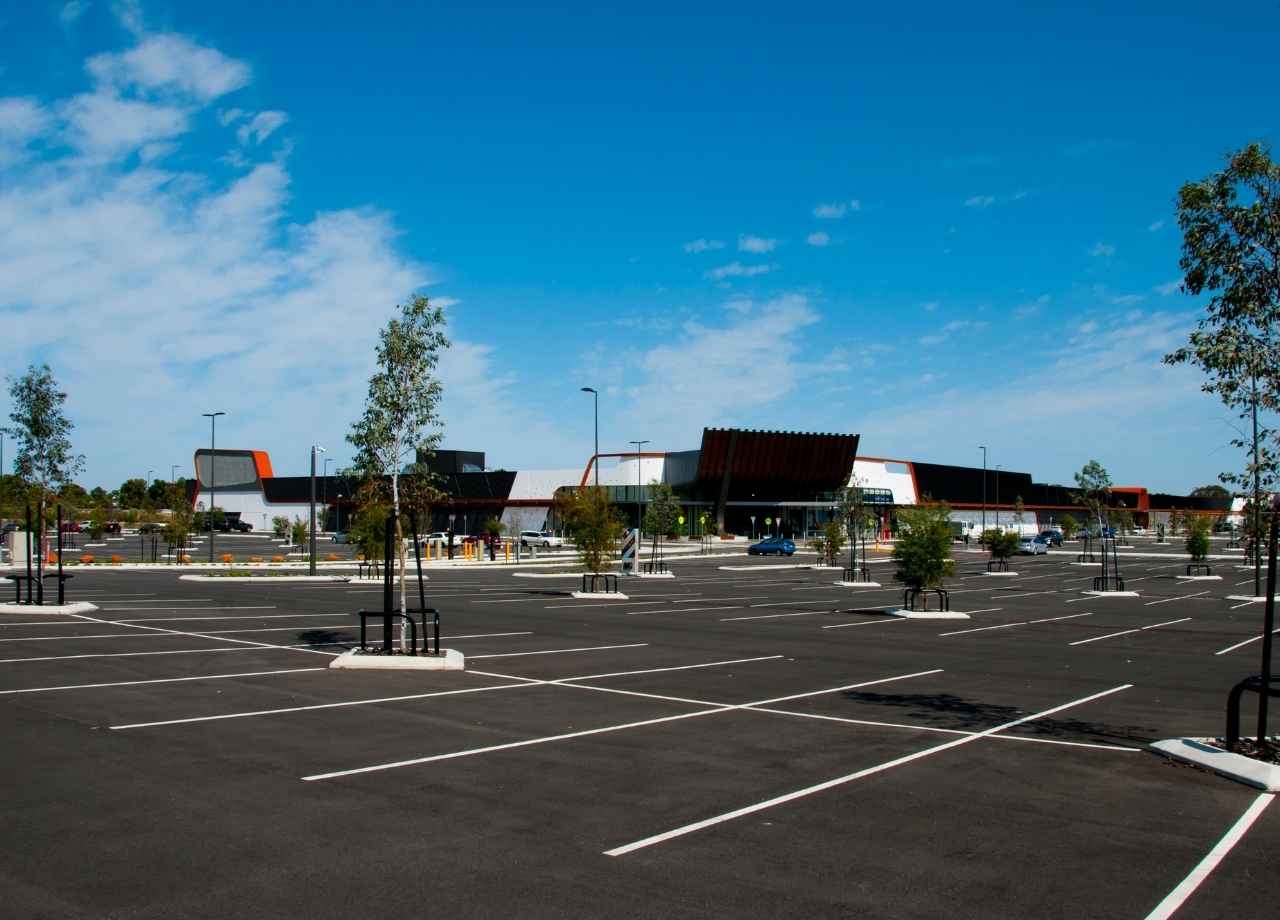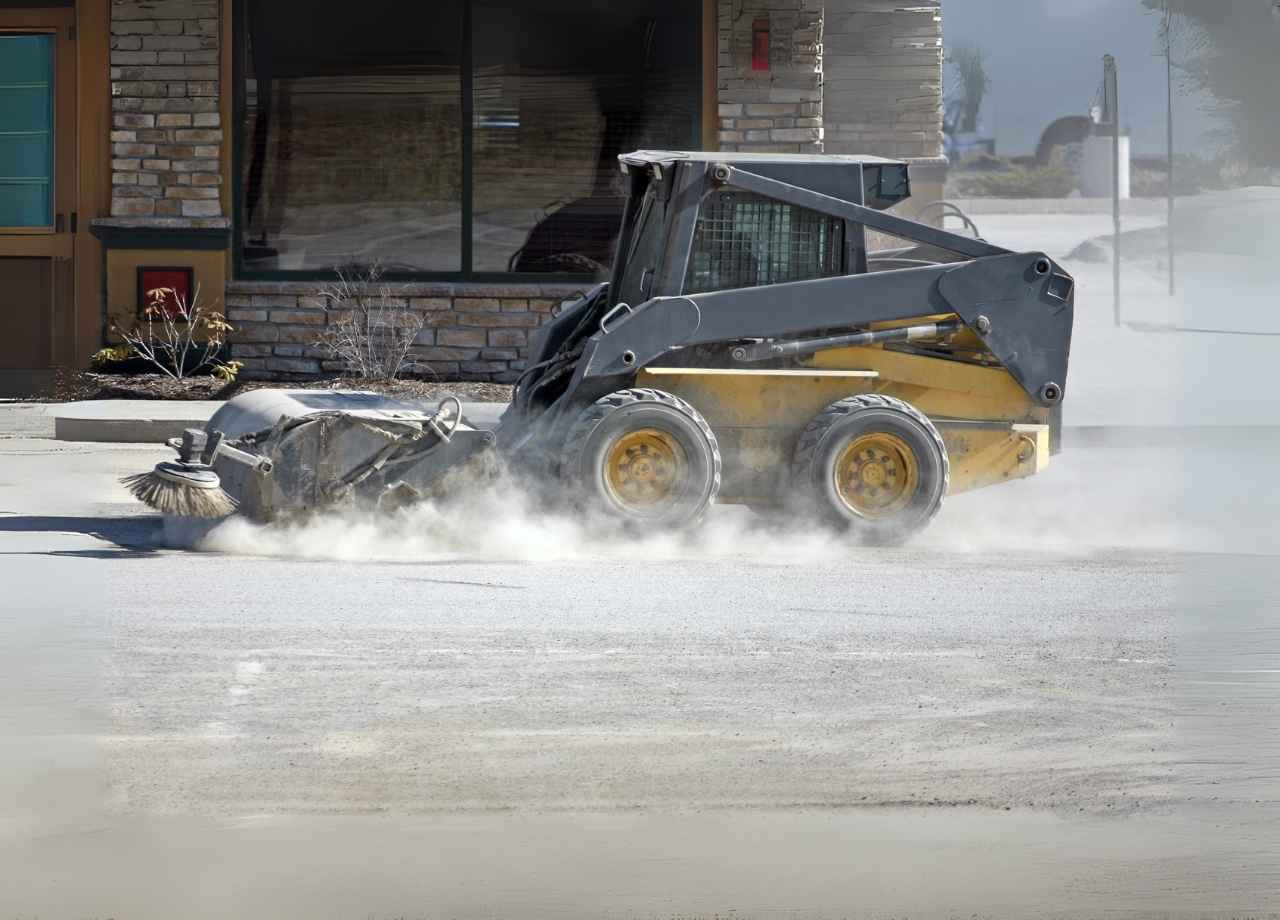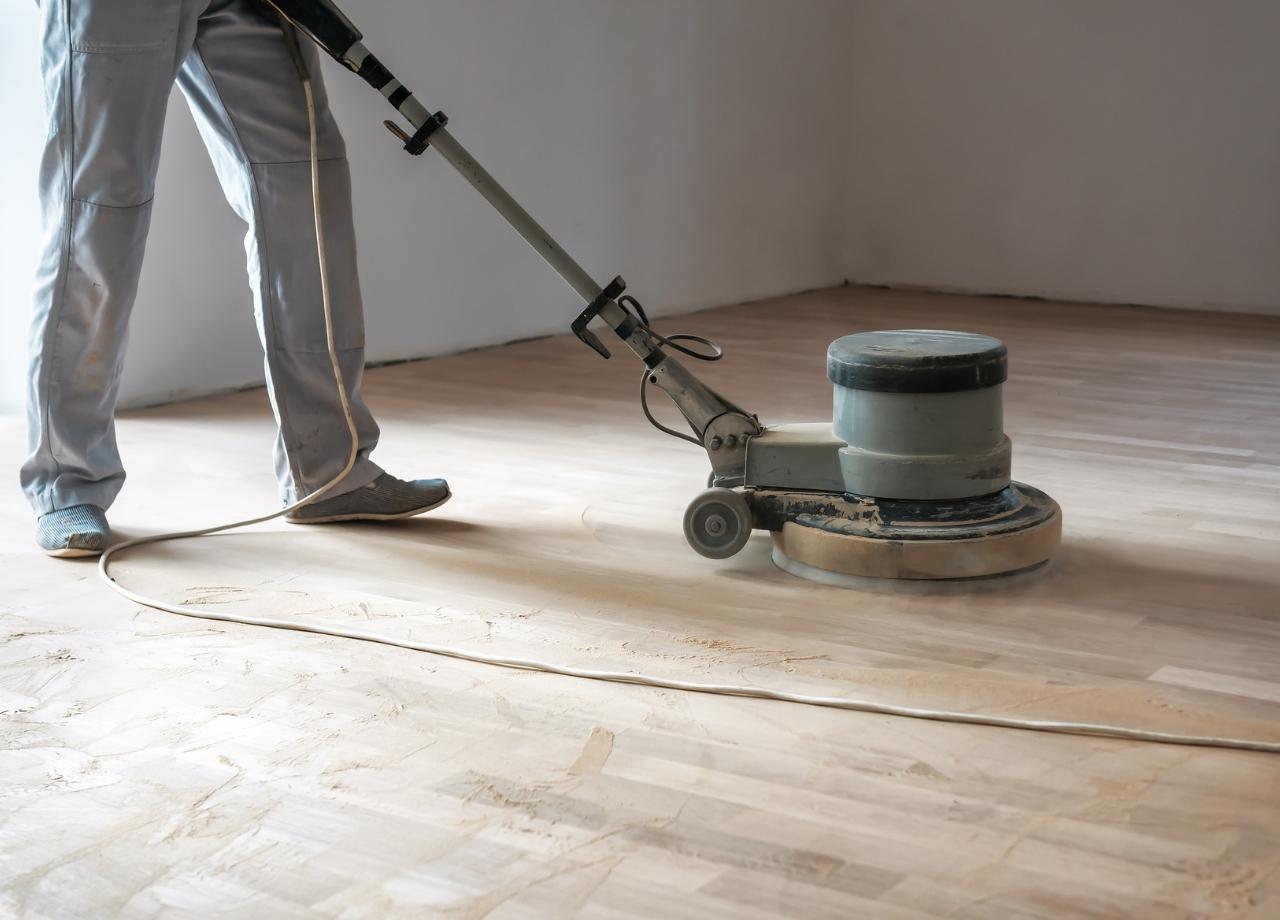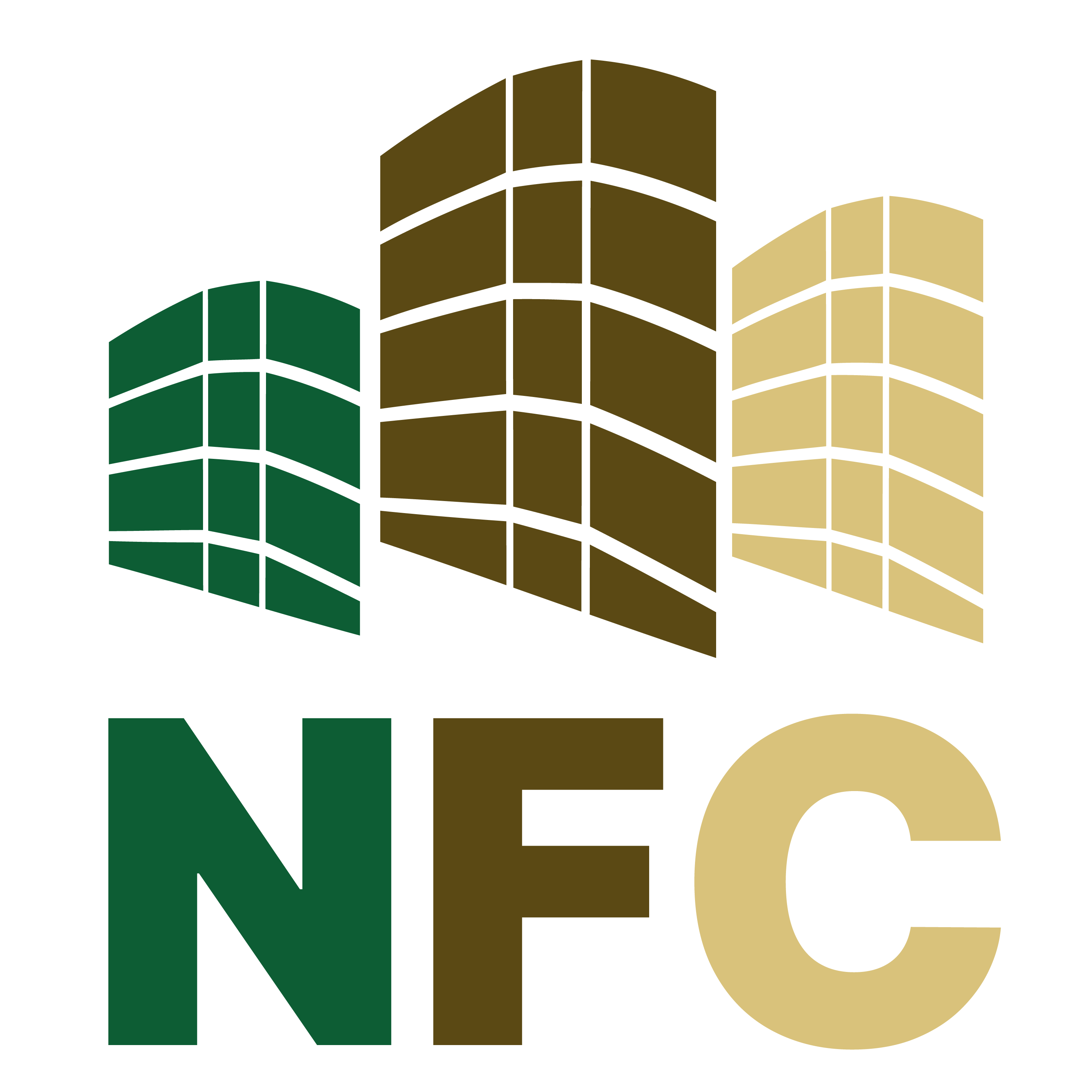How To Keep Your Lot Presentable Year-Round
A poorly maintained lot doesn’t just hurt appearances—it sends the wrong message to clients, tenants, and visitors. Overgrown weeds, oil stains, faded parking lines, and scattered debris suggest neglect and disorganization. A well-kept lot, on the other hand, tells people the property is actively managed and cared for. It reflects attention to detail and pride in the space.
This article breaks down what works—and what doesn’t—when it comes to keeping your lot in top shape, no matter the season.
Weed Control Isn’t Just for Spring
Letting weeds grow through cracks or along curbs downgrades the appearance of your entire property. This isn’t a once-a-year task. Regular inspections and follow-up treatments are essential to maintain a clean, professional look.
- Schedule monthly inspections for weed growth
- Keep post-emergent herbicide on hand year-round
- Be aware that winter weed flare-ups are common during mild spells
Many facility teams make the mistake of applying seasonal treatments and then forgetting follow-ups. Weeds thrive in high-moisture zones like drainage areas and broken pavement—these “hot spots” often need more frequent treatment. Partner with a grounds crew that understands your local climate and can anticipate patterns before they become problems.
Parking Line Visibility Needs Regular Refreshing
Faded lines don’t just look bad—they create confusion and increase liability. Drivers rely on visible markings for safety and navigation. Poor visibility increases the risk of minor accidents and pedestrian conflict zones.
- Restriping is typically needed every 12–18 months
- High-traffic or high-turnover lots may need biannual touch-ups
- Check ADA markings, fire lanes, and directional arrows as often as regular stall lines
Set a quarterly review schedule to check striping visibility before it fades too far. Proactive planning avoids downtime and the costs of emergency restriping.
Trash Patrol Should Be Daily, Not Weekly
Litter builds up fast. Entryways, fence lines, loading zones, and windy areas tend to accumulate trash even on calm days. Relying on once-a-week cleanups won’t cut it—your visitors notice the debris even before they park.
- Assign someone to patrol for trash once per shift
- Prioritize entry points and high-wind corridors
- Secure trash bins and schedule regular pickups
Overflowing dumpsters and unsecured cans create a snowball effect. It’s worth investing in wind barriers or netting to keep debris from spreading into the lot or nearby landscaping.
Oil and Stain Removal Requires the Right Tools
Dark stains from oil or chemicals make an immediate negative impression. Left untreated, they soak into the asphalt, weaken the surface, and increase long-term repair costs.
- Use degreasers made specifically for asphalt or concrete
- Avoid general household cleaners—they can leave residue and attract dirt
- Schedule monthly spot cleaning and quarterly professional deep cleaning
Pressure washing works, but only when done properly. The wrong nozzle or pressure setting can damage the surface. If you don’t have trained staff, consider outsourcing this task to specialists who know what they’re doing.
Lighting Makes or Breaks Night-Time Curb Appeal
A poorly lit lot doesn’t just look forgotten—it feels unsafe. Shadows conceal damage, hide trash, and create opportunities for loitering or vandalism.
- Use LED fixtures for long-lasting, consistent brightness
- Check all lighting monthly and replace bulbs immediately
- Clean covers quarterly—dirty lenses can reduce brightness by 50%
Motion-sensor lights work well in low-traffic areas. They save electricity while still deterring unwanted activity. Well-lit spaces project safety and order—two things every visitor wants to feel.
Drainage Should Be Watched Every Time It Rains
Pooling water means your drainage isn’t working. Beyond looking bad, standing water degrades pavement, invites algae, and increases the risk of slips and falls.
- Walk your lot after every heavy rain and note where water lingers
- Clear out catch basins at least twice a year
- Upgrade to finer grates or sediment traps if clogs are frequent
Addressing drainage issues early prevents bigger repairs down the road. Proper water flow management protects your surface and preserves your curb appeal.
Snow and Ice Management Requires Fast Response
In colder climates, snow and ice need to be handled quickly. Waiting too long invites accidents and structural damage.
- Partner with a snow service that offers 24/7 support during storms
- Equip in-house teams with salt spreaders, plows, and snow blowers
- Use salt alternatives like magnesium chloride to reduce concrete corrosion
Walkways, curbs, and shaded areas freeze over quickly—those are the most common areas for slip incidents. Snow piles should be cleared completely, not just pushed aside.
Seasonal Landscaping Should Fit the Lot’s Size
Unmanaged landscaping can make a neat property look chaotic. Oversized shrubs, messy planters, or dead plants send the wrong message.
- Choose low-maintenance plants suited to your climate
- In warm areas, opt for succulents or dwarf grasses
- In cold areas, ornamental evergreens offer structure year-round

Avoid mulch that washes away in storms. Rock beds or rubber mulch stay put and reduce long-term maintenance. Make sure plant beds are weeded, edged, and regularly inspected.
Signage Should Be Clean, Straight, and Up to Date
Visitors and tenants rely on signage for navigation, expectations, and safety. Faded or crooked signs show neglect and can even create legal liability.
- Wipe signs clean monthly
- Tighten or straighten leaning posts
- Replace faded, cracked, or outdated signage immediately
Don’t forget about temporary signs. Banners left over from construction or events should be removed immediately. Loose zip ties, faded paper signs, and taped notices all add clutter.
Security Cameras Help You Spot Maintenance Gaps
Security cameras aren’t just for crime prevention. They’re also helpful for identifying areas where maintenance is falling short.
- Review footage weekly to spot trash buildup or illegal parking
- Adjust staffing or schedules based on visible problem areas
- Monitor lighting coverage and identify dark spots or shadow zones
Remote monitoring can also help detect after-hours dumping or identify repeat problem areas—so you can fix small issues before they become big ones.
Pavement Repairs Shouldn’t Wait for Big Projects
Tiny cracks don’t stay tiny. They invite water in, which then freezes, expands, and destroys the asphalt from the inside out.
- Schedule annual sealcoating and spot patching
- Use infrared patching for winter or cold-season fixes
- Avoid relying on cold patch products—they’re only temporary
Quick, routine repairs reduce the chance of major repaving projects. The longer you wait, the more expensive the solution becomes.
Paint Touch-Ups Aren’t Just Cosmetic
Light poles, bollards, fences, and curbs all get scuffed and faded. While it may seem minor, fresh paint reinforces that a space is watched and maintained.
- Keep touch-up paint for each surface or color used
- Inspect and paint scuffed areas during slower periods
- Use reflective paint where visibility is critical
Paint touch-ups help guide traffic, prevent damage, and support ADA compliance—all while keeping the space looking fresh.
Employee Buy-In Makes a Difference
Facility maintenance doesn’t work without a team that’s invested. Staff need to feel ownership over the property’s appearance and know how to report issues quickly.
- Post checklists in maintenance areas
- Hold short weekly check-ins on lot conditions
- Encourage issue-spotting and proactive reporting
When your team knows what to look for—and feels empowered to speak up—minor problems don’t get a chance to grow.
If keeping up with all of this feels overwhelming, that’s exactly where National Facility Contractors steps in. We help property teams stay ahead of wear and tear with consistent, nationwide site care that scales with your needs.
Conclusion16
A presentable lot isn’t the result of one big cleanup or a seasonal push. It’s the outcome of consistent, smart scheduling and having a sharp eye for details others might overlook. When clients, customers, or tenants pull up, they don’t just see asphalt and paint—they see how much you care. That impression starts before they even open the door.
Let me know if you’d like this blog to be turned into a downloadable checklist, email campaign, or social snippet next. Happy to help with next steps!







